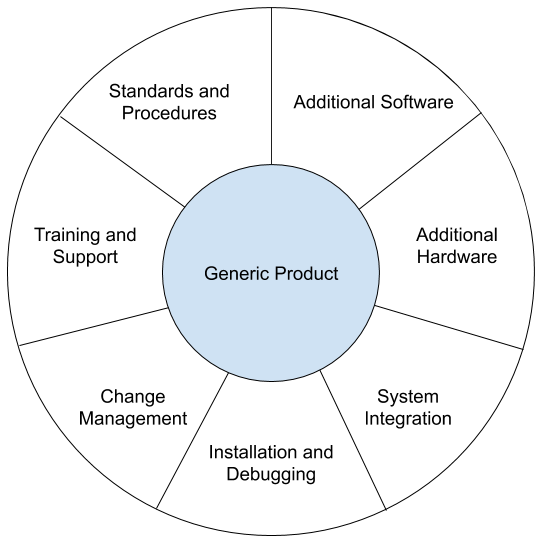 Crossing the Chasm: Marketing and Selling High-Tech Products to Mainstream Customers by Geoffrey A. Moore
Crossing the Chasm: Marketing and Selling High-Tech Products to Mainstream Customers by Geoffrey A. Moore
My rating: 4 of 5 stars
The book presents five different groups involved in the purchasing of purchasing of bussiness technology. Each of these have different characteristics, without understanding this and trying to just do the same thing companies fail. The key presented in the book is the chasm which needs to be crossed in order for the product to be a financial success.
Innovators: The Technology Enthusiasts – these people love the product for the technical genius. They don’t even fully care if it works, they just love to try things out.
Early Adopters: The Visionaries – these are the people who can see the potential of the product. They will likely buy it at a premium because they think it will give them an advantage over the competition. This is a great cash injection but care must be taken so as not to over promise to these people else it will hold you back later. Visionaries are lead by enthusiasts.
The chasm
Early Majority: The Pragmatists – this is where the money really is. The challenge is that these people want more than just your product – they want it to be supported, integrated etc. These are people with a budget which you need to win over without any major challenges.
Late Majority: The conservatives – they have a focus on stability, price, simplicity etc. Conservatives are lead by the pragmatists but are still very cautious.
Laggards: The Skeptics – you will never win these people over, they are negative about what you will deliver. You will never win them over but by minimising the distance between what you sold and what they got they will be unable to negatively influence.
Crossing the chasm
Companies which go hunting for sales at any cost end up satisfying no one and fail. The key is to be the largest fish in a small pond and to do that you need to carefully select a single market which you are going to invade, then link hitting the lead bowling pin other markets will fall later.
To put it simply, the consequences of being sales-driven during the chasm period are fatal
The key is not to target the biggest market, it is to target the one which has the biggest urgency for their problems to be solved. The target is a market which is
Big enough to matter, small enough to lead, good fit with your crown jewels
Then work out how to make your product easiest for them to buy.

Where as the initial product launch will get you to the chasm getting a “Whole Product” launched is what the majority need. The completion of the whole product will likely be made up with other companies such as partners and Allies. The challenge with these arrangements are a mismatch in company cultures, planning cycles, sides over selling etc.
Pragmatists will not buy unless they can compare, as such competition is a prerequisite of their bussiness.
 Range: Why Generalists Triumph in a Specialized World
Range: Why Generalists Triumph in a Specialized World The Dichotomy of Leadership: Balancing the Challenges of Extreme Ownership to Lead and Win
The Dichotomy of Leadership: Balancing the Challenges of Extreme Ownership to Lead and Win